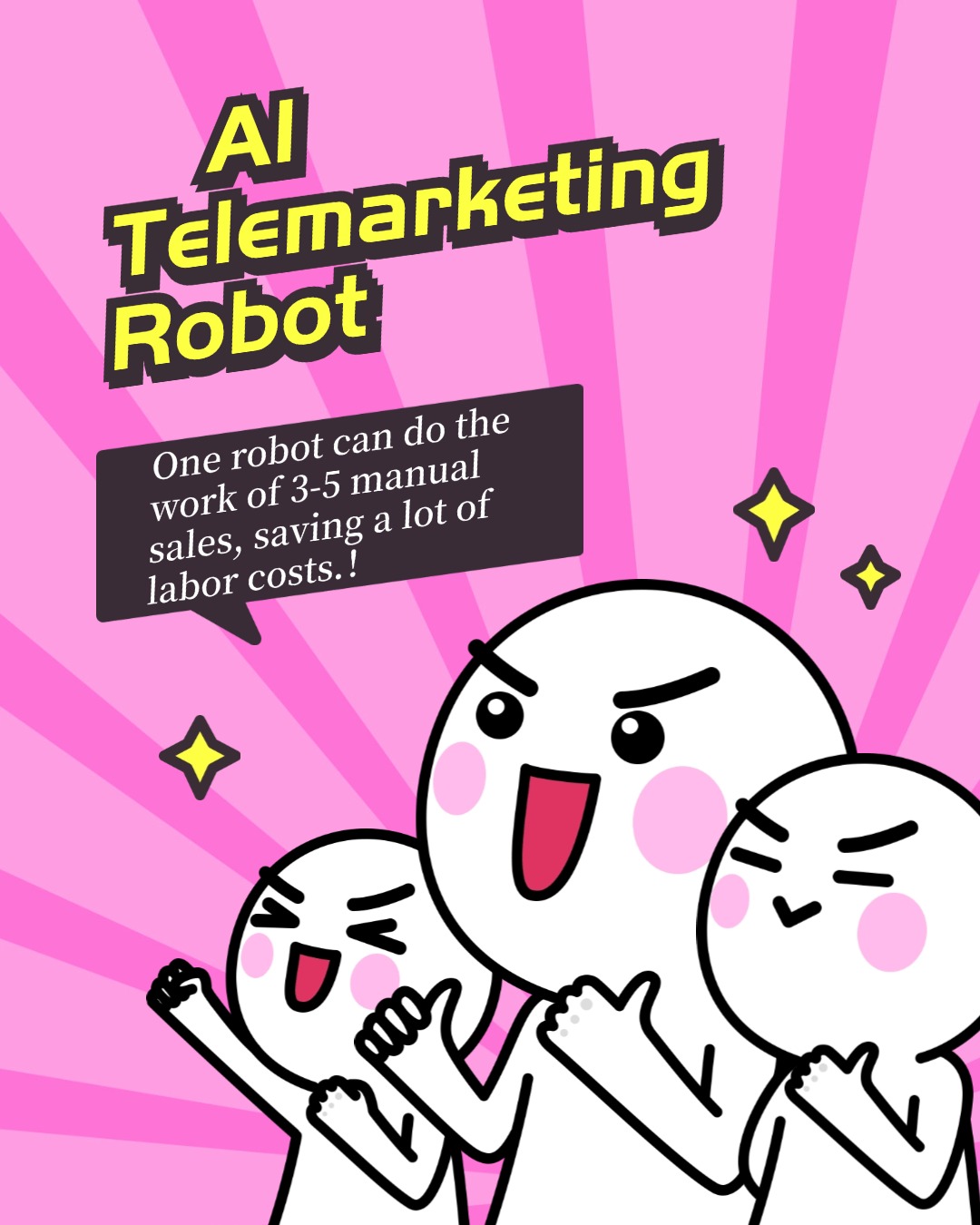As early as 2017, telephone robots appeared on the market. At that time, the so-called “telephone robots” were actually voice advertisements, and eventually manual transfers were required. At that time, two phones were needed, one for answering and one for outbound calls. The line charges at that time were very low. For example, the 010 loan line only cost 8 cents.
In early 2018, the so-called “artificial intelligence voice sales robots” began to appear. At that time, companies that made telemarketing robots talked about why robots should be used to replace real people to make calls. The reasons put forward included the difficulty of manual recruitment, high costs, easy fatigue and resignation, while robots can work endlessly, and the era of AI replacing manual labor has arrived. And a comparison chart of the daily call volume between manual and robot is used to prove the advantages of robots.
However, with the technology at that time, these were all exaggerated propaganda. Although there were several well-known brands on the market at that time, such as Nanjing Silicon Machine and Hangzhou Baiying, most of the products were not intelligent, but were based on simple voice recognition outbound call systems. Since 2018, the problem of mobile phone numbers being blocked due to high-frequency calls has gradually become prominent. Although various methods have been tried, such as using out-of-town lines and 95 numbers, the connection rate has always been unsatisfactory.
In October 2018, the market began to try to use Axb small lines, which slightly improved the connection rate. However, the telemarketing robot industry has been caught in a crazy price war. I remember that the most expensive concurrent robot cost tens of thousands of yuan.
Later, a lot of brands emerged, making the market very chaotic. The core problem lies in the connection rate and high-resistance complaint lines, which are not technically demanding but highly replicable. The cloud robots on the market have been upgraded and improved many times, adding functions such as inbound calls, intelligent customer service, human-machine switching, big data customer acquisition and customer management system, but without a stable line, everything is empty talk.
By the summer of 2019, there was even a situation in the industry where robots were free and only required phone bills. However, this does not mean that customers really save money, because the large number of outbound calls made by robots every day causes data consumption to be extremely fast, and phone bills soar accordingly. In this case, can we still call it an “artificial intelligence telephone robot”?
As for the line problem, the current 95 line has almost disappeared, and the mainstream practice is to use low-monthly mobile phone cards as intermediate numbers for external display. Whether it is an Axb small number line or a two-way call back plus transparent mobile phone number, it is necessary to extract the serial code and use the mobile phone number as an external display and human shield to prevent the number from being blocked. However, in the era of telemarketing controlled by the Ministry of Industry and Information Technology, the blind calling and blind calling telemarketing method is becoming more and more difficult.
What I want to say is that the line is relatively more important than the robot. Don’t pursue the promise of 100% non-blocking and 100% non-shutdown of the line, because this does not exist, only relatively stable, which is based on policy changes. In the current market environment, we need to look at the telemarketing robot industry more rationally, so that artificial intelligence technology can really help operators reduce their burden.


